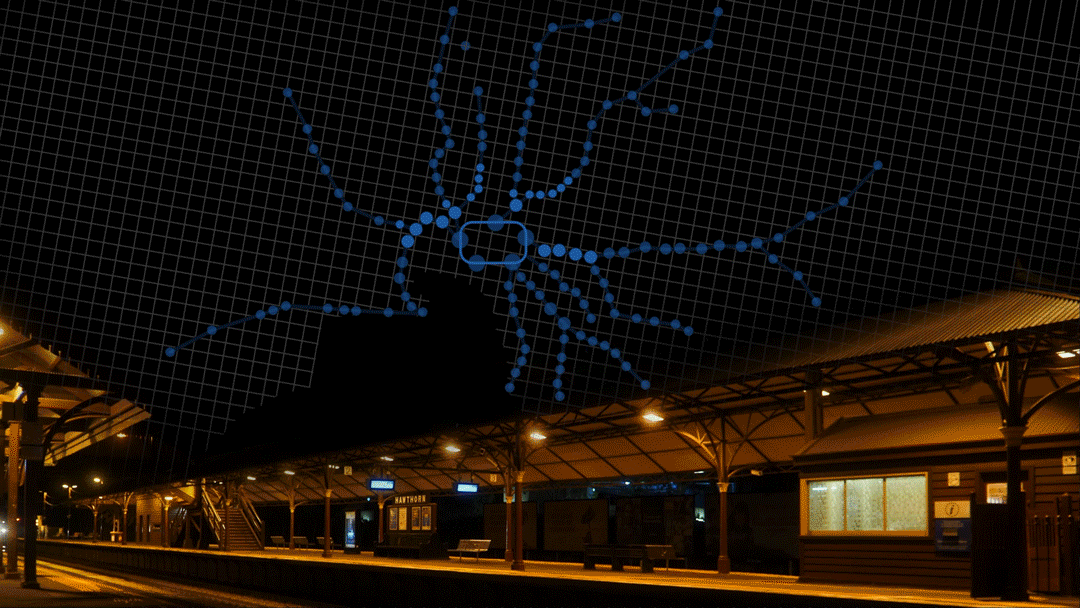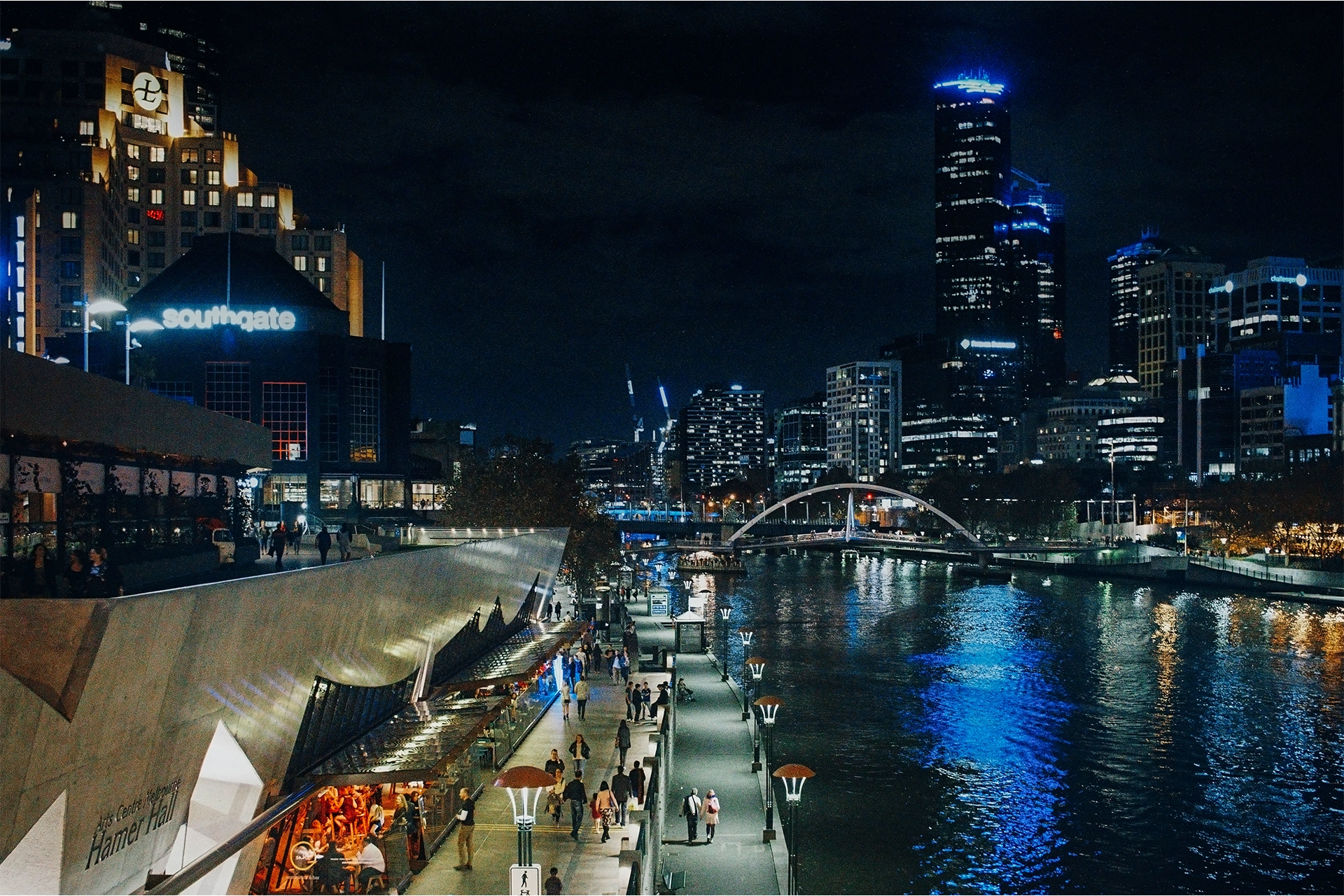
Politics & Society
Mapping the hidden lives of Melbourne’s night workers

Sometimes Melbourne’s public transport goes dark. Our Map of the Month shows it makes life hard – even dangerous – for those in our night-time economy
Published 4 July 2024
Melbourne wants to be a vibrant 24-hour city accessible to all.
Critical to this commendable goal is ensuring the city doesn’t just focus on the typical 9-to-5, and that the ‘other 9-to-5’ – between 9pm and 5am – gets equal attention in our plans, policies and aspirations.

Melbourne's identity is deeply rooted in its night-time economy (NTE) and the city's pulse continues to beat after dark.
While interest in night-time and 24-hour economies was growing prior to the pandemic, this trend has accelerated post-COVID. Night-time economies are being used as a way of drawing people back into the cities, and have become an essential piece in the strategic plans of Australia’s major cities.
Yet there is a seemingly simple question that is critical to achieving this ambition: can people get around their city affordably and efficiently 24-7?
The key to answering this is understanding how good public transport is in the 'other 9-to-5'.
This is where our Map of the Month comes in.
Sam* is a food services assistant at a Melbourne hospital. During the day, a journey from home to work takes seven minutes by car or 23 minutes by public transport.
Starting at 6am for the breakfast shift, this journey can take more than an hour, with a 20-minute wait in the dark between bus services.
Because of the lack of public transport, no available car and the prohibitive cost of taxis or ride-shares, Sam has started cycling to work in the dark.
In 2014, the Labor government made an election promise to deliver 24-hour public transport for Melbourne – though just at weekends. In January 2016, it began a 12-month trial, and this was then made permanent in 2017.
The evidence clearly showed the centrality of public transport to the 24-hour city ambition.
With 24-hour public transport, people were spending more time and money in Melbourne’s night time economy. The then Minister for Public Transport claimed that 70 per cent of Melburnians would have access to all-night public transport within one kilometre of their home as part of this scheme.
However, ten years later, Melbourne’s public transport Night Network still only runs on Friday and Saturday nights. This caters to people seeking a good night out at the weekend, but crucially, those that keep the NTE running are largely left out.
These are the essential night workers who keep the city running 24-hours a day, 365 days a year – and for five days each week they get no benefit from the Night Network.
To illustrate this, we worked with data and mapping experts from Aurin and the Melbourne Data Analytics Platform to visualise the arrivals at every train, tram and bus stop in Melbourne for each hour of the day, Monday to Thursday.
1 / 4
The maps reveal that many stops ‘go dark’ in the evening, and there are huge ‘black holes’ where public transport ceases entirely for hours each night.
While we acknowledge that track works and maintenance are often undertaken during the quieter dark hours, and that the provision of public transport is a matter of supply and demand, with usage trailing off at night, it is clear that the night-time is plagued by ‘transport deserts’ affecting workers and, in turn, the viability of a 24-hour city.
So, what can be done?

Politics & Society
Mapping the hidden lives of Melbourne’s night workers
Interviews that we conducted as part of our Night Shift project shed light on the vital importance of 24-hour public transport to the city’s night shift workers, with many relying on trains, trams and buses to get them to and from their shifts safely.
Some reported that they would not feel safe driving home after a long night shift because of the risks associated with fatigue while driving.
This is significant given that fatigue is a contributing factor in 16 to 20 per cent of road crashes in Victoria.
Some, like Sam, do not have a car license, instead relying on public transport (or parents, family or friends) to ferry them around.
A lack of public transport can result in workers missing out on shifts. This has the potential to exacerbate existing staff shortages – especially in hospitality – causing venues to close early.
Melbourne cannot afford to lag behind its global peers. Other major cities have successfully implemented comprehensive night-time transport systems that cater to both the entertainment crowd and essential workers.
Ensuring safe and reliable transport for night-time workers and continuing to fill the gaps in the network are essential for the success of Melbourne’s 24-hour city vision.
Map of the Month is a science communication project of the University of Melbourne (Melbourne Centre for Cities, AURIN, Melbourne Data Analytics Platform and Pursuit) using maps to spark important policy conversations across metropolitan Melbourne. This pilot is supported by the Lord Mayor’s Charitable Foundation and in partnership with the Victorian Office for Suburban Development and the Municipal Association of Victoria. Academics, community leaders and government representatives from across Melbourne contribute to the maps and accompanying stories.
This month’s story was produced in collaboration with the Australian Research Council 'Night Shift' project, and the maps were produced by Dr Stuart Lee, Flavia Barar and Max Stevens using data from Public Transport Victoria.
*not their real name.